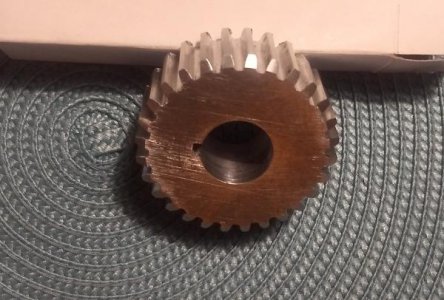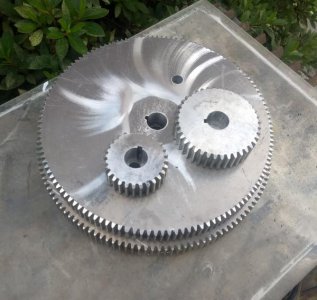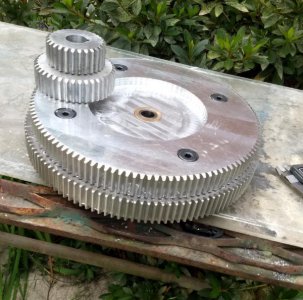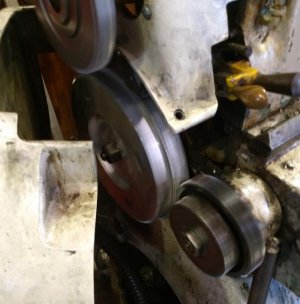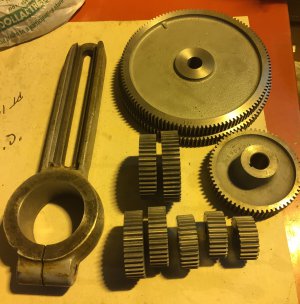And..... we're done. *
The four gears I need to cut the metric threads I'll actually use are made. The final was the 127
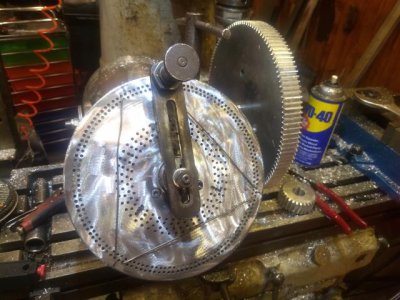
I needed to cut a tooth every 40th hole around the 127 hole plate, for 42 laps around the dial. Since my sectors aren't big enough for the circle, and I didn't feel like counting off forty 127 times, I counted off and marked 40 three times. Then I made 3 piece of mechanics wire that spanned 39 holes. Thus you had 39 spaces for a wire, an empty hole for the index pin, another 39 wire, another empty hole, another 39 wire, another empty hole. And from there it should be 7 holes back to the start point.
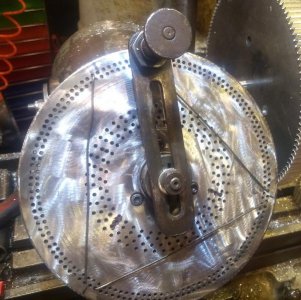
I developed a pattern where I would advance the sector to the next hole and start the cut. While the cut was progressing, I would move the just-left wire to the front, leaving the empty hole and then making sure there were eight empties (one plus 7) between it and the currently trailing wire. Thus I always had a wire either side of the sector pin, and moved the wire so that next point was surrounded, if that makes sense. That way I had double references in case a wire got bumped out of place.
Next up is to figure out how to pin the double idler together and bore and install a bush.
* I'm thinking about remaking the 120 tooth. I had the mandrel drawbar lightly nipped down, which worked just fine for the smaller gears. But the larger 120 tooth put up enough cutter vibration that it worked loose. It took me a bit to realize why I had picked up more vibration / wobble in the blank... a few teeth are a bit wonky. I did remake the drawbar as a stud and nylock nut before doing the 127.


